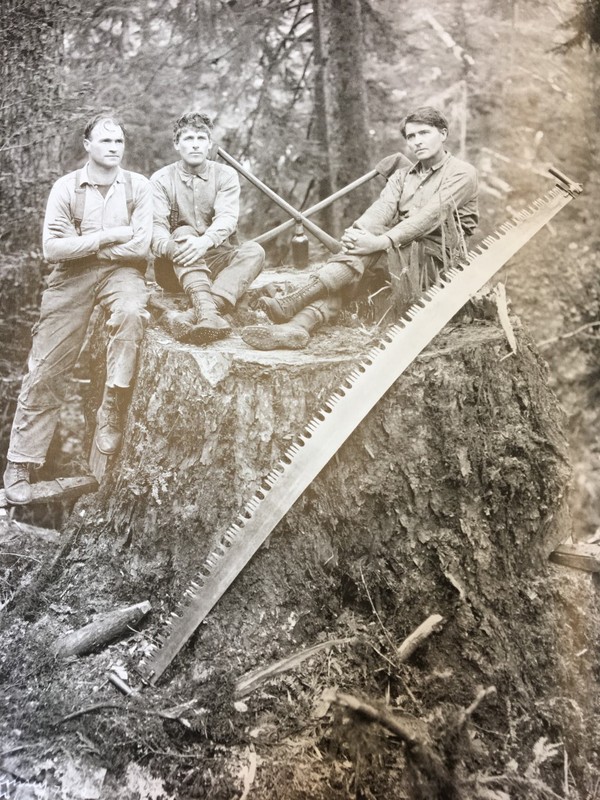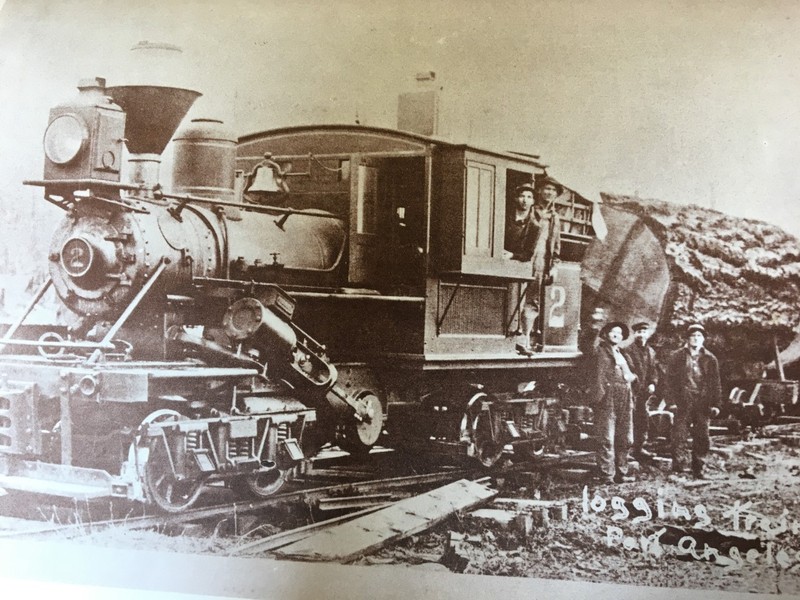Logging Methods
Saws
Handsaws were used to fell trees eventually, which led the way for the establishment of sawmills. The first mills used water-powered saws. These were soon replaced with steam engine powered saws. Animal power was used, too, for the purpose of hauling the wood from the forest to the mills. Usually these were horses, mules, or oxen.[1]
There were two main types of power saws used in sawmills: circular saws and band saws. These kinds of saws are still here today. There is little difference in the productivity of either saw. Certain mills just used one or the other typically. A circular saw it literally a power saw that is circular. A band saw is a straight saw, as opposed to a circular one, that cuts back and forth, like a handsaw, whilst standing vertical. They became widely used in the United States in 1869. The circular saw was used early in the mid 1800s.[2]
The Railroad
The railroad had the greatest impact on the lumber industry. It made more forested land accessible to the logging industry. It also sped up the entire process. The Southern Railroad, the largest railroad in this region of Appalachia, was extended southwest to Murphy in the 1890s, increasing the connectivity of Western North Carolina to the rest of the state and country.[1]
The introduction of new technology in the railroad augmented the growth of the logging industry. The invention of the Shay engine in the 1880s was particularly useful to loggers in the mountains of North Carolina. Typical side rod engines could not handle the steepness or the curviness of mountain railways. The Shay engine got rid of the side rides and reduced the gears, while also giving power to each individual wheel (like all wheel drive, but for a locomotive). This gave the train the power and traction it needed to handle the rough mountain terrain.[2]
The Climax engine was introduced soon after the Shay. It had two cylinders, which created a balanced drive. This improved traction even more. The Climax was not very successful nationwide, but it was particular useful for loggers in Appalachia. It was primarily used for short logging railroads, called spurs.[3]
Prior to the railroad’s presence in WNC, loggers had to use different methods for hauling timber from the forests to the sawmills. In New England, they would float the logs down the rivers to the mills. They tried this in NC, but failed miserably due to flooding and logs jamming in the river.[4]
Another method of transporting timber was the “pole railroad.” Basically, a small locomotive, or even animals in the early days, would pull logs on a track made from smoothed out logs (“poles”) rather than an actual steel railroad track. This practice was costly and not as stable as the railroad, so it soon gave way to newer technology.[5]


